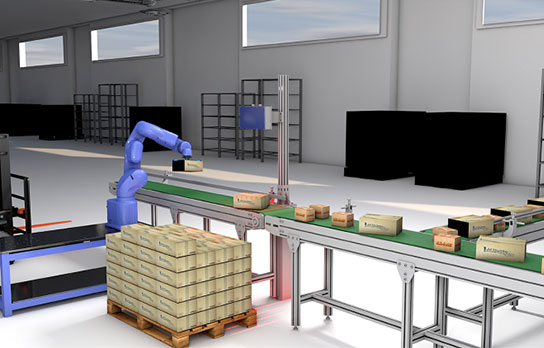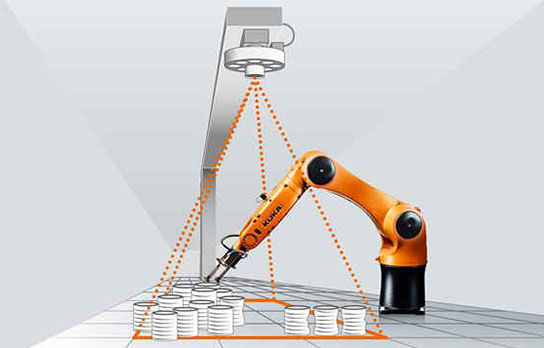Visual guidance robot loading and unloading is an automatic loading and unloading system based on computer vision technology and robotics technology. The image recognition and position positioning of the items treated by the computer are carried out, and then the robot is controlled to complete the automatic loading and unloading operation.
Compared with traditional robot loading and unloading methods, visually guided robot has the following advantages:
1. High precision
By identifying and analyzing the shape, size, position and other attributes of the object, the visual guided robot can accurately locate and operate the object to achieve higher accuracy requirements.
2. Strong adaptability
Visually guided robots can adapt to objects of different shapes and sizes without having to fix the shape and size of the object.

3. Strong flexibility
Visual guide robot can realize automatic loading and unloading of items of different shapes and sizes through program modification and parameter adjustment, with strong flexibility.
4. High security
During the loading and unloading process of the visual guide robot, the operator does not need to enter the working area of the robot, avoiding the potential safety risks caused by the operator's misoperation.
5, good stability
The loading and unloading process of the visually guided robot is completed by the robot itself, which avoids the unstable factors of manual operation and makes the task more stable and reliable.

6. High degree of automation
The loading and unloading process of the visual guided robot is basically automated, without manual intervention, reducing labor intensity and human resource costs.
To sum up, visually guided robot loading and unloading has the advantages of high precision, strong adaptability, strong flexibility, high safety, good stability and high degree of automation, which can greatly improve production efficiency and quality.